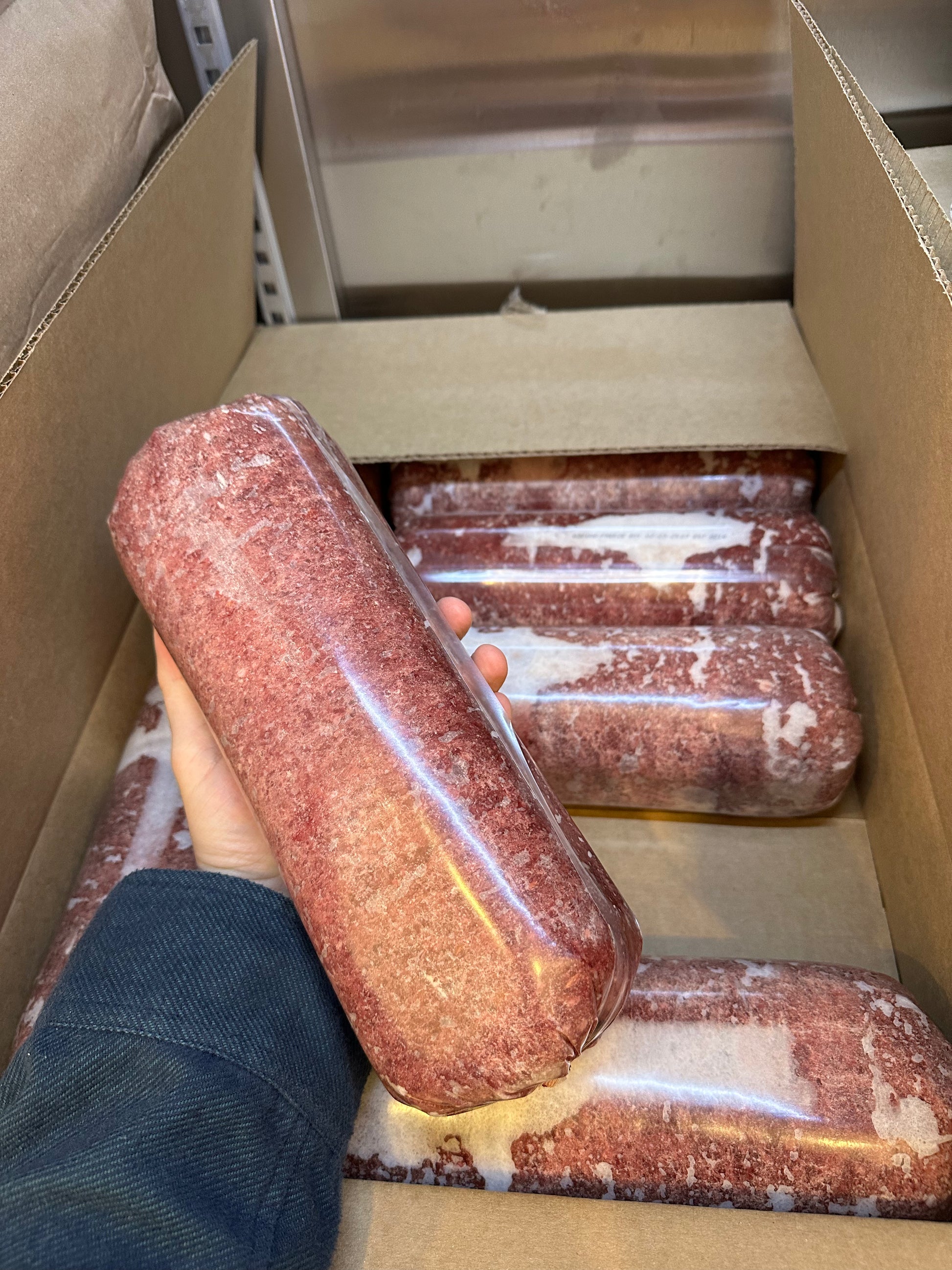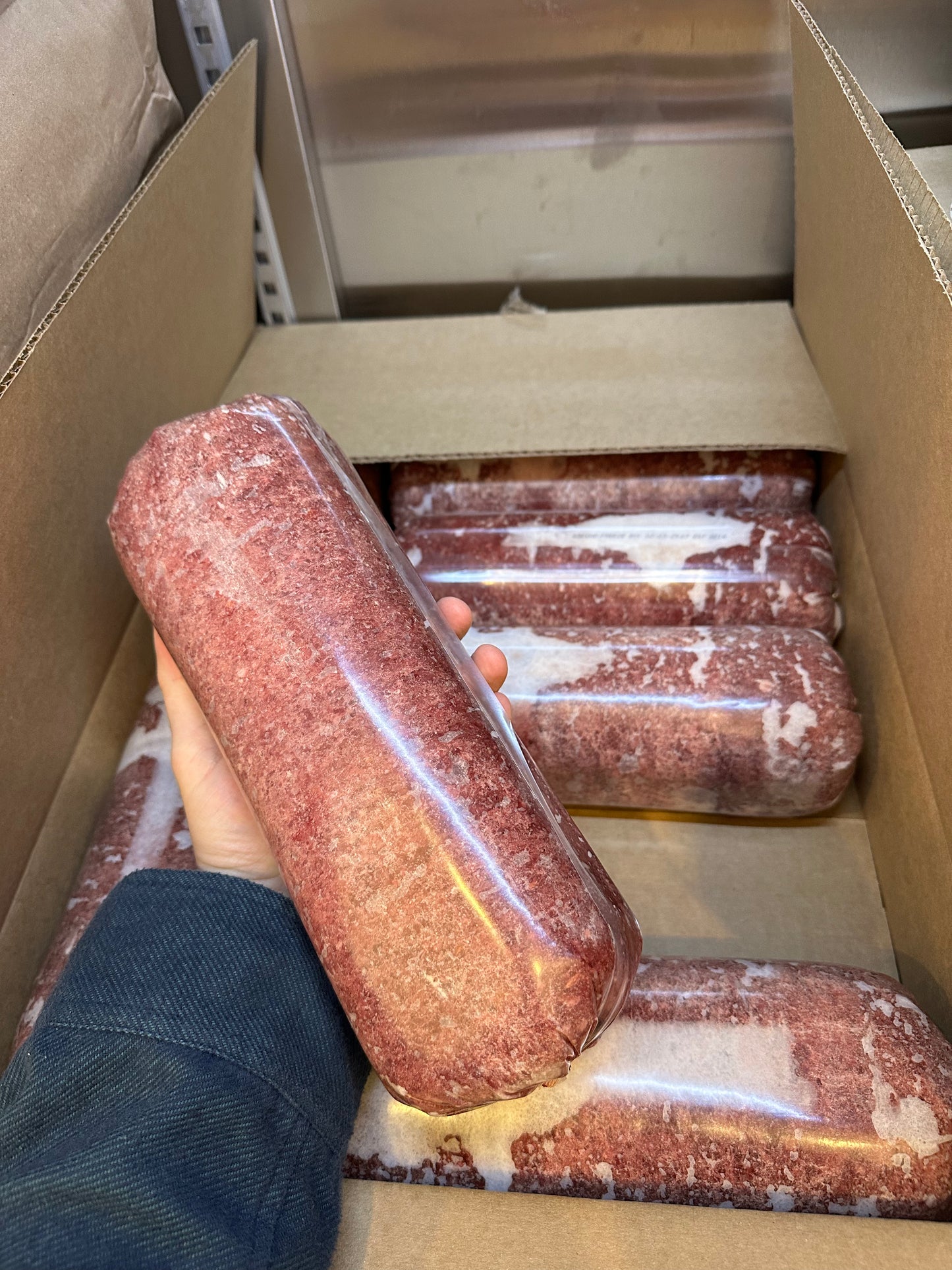How do I switch my dog from kibble to raw?
Switching your dog to an all raw diet should be done gradually over a period of several weeks to avoid any digestive upset or other health issues. Here are some general steps you can follow to transition your dog to a raw diet:
-
Consult with a veterinarian or qualified canine nutritionist: Before making any significant changes to your dog's diet, it's important to consult with a professional to ensure that a raw diet is appropriate for your dog and to develop a customized feeding plan based on their individual needs.
-
Choose high-quality raw food: Look for raw food that is made from high-quality, human-grade ingredients, and that is free from fillers, preservatives, and artificial additives. You may also want to consider a pre-made raw food diet that is balanced and complete, or a DIY approach that includes meat, bones, and organs in the correct proportions.
-
Start with small portions: Begin by replacing a small portion of your dog's regular food with raw food, gradually increasing the amount over time until your dog is eating 100% raw food.
-
Monitor your dog's digestion: Watch for any signs of digestive upset, such as vomiting, diarrhea, or constipation. If your dog experiences any issues, slow down the transition or seek advice from your veterinarian or canine nutritionist.
-
Adjust the diet as needed: As you transition your dog to a raw diet, you may need to adjust the amount and types of food you're feeding based on your dog's individual needs and preferences.
Remember, the transition to a raw diet should be done gradually and under the guidance of a professional to ensure that it's safe and appropriate for your dog's individual needs. With patience and persistence, you can help your dog enjoy the many potential benefits of a raw food diet.

Raw Doggin' It
RDI - Raw Dog Food
Share
